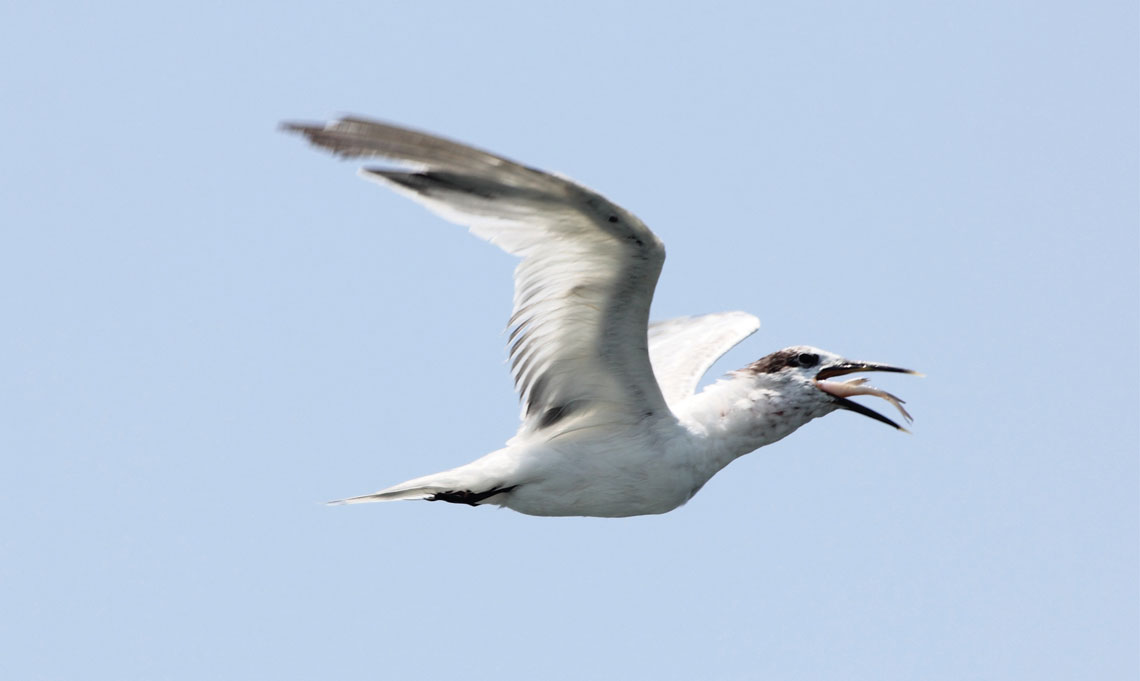The strain of the bird flu virus that has been spreading across Brazil likely originates from the coastal region of Chile or Peru. Brazilian researchers sequenced the genome of the pathogen that infected the first Brazilian bird identified with the disease — a Cabot’s tern (Thalasseus acuflavidus) found dead in Marataízes, on the south coast of Espírito Santo, in May this year — and concluded that it is genetically similar to the strain that has been circulating in the country’s two South American neighbors since 2022. The results of the analysis were shared on August 21 in an article posted on the Social Science Research Network (SSRN) preprints platform, for papers that have not yet undergone peer review.
“Our study is a brief report of the first case identified in Brazil,” says Aristóteles Góes-Neto, a microbiologist from the Federal University of Minas Gerais (UFMG) who helped sequence and analyze the virus genome in partnership with researchers from Hospital Israelita Albert Einstein in São Paulo and Brazil’s Ministry of Agriculture, Livestock, and Food Supply (MAPA). “The infected species, the Cabot’s tern, is very common in Brazil. It is found from Amapá to Rio Grande do Sul, including on islands in the ocean.”
The highly pathogenic strain of the influenza A (H5N1) virus that is currently circulating in the country emerged in Europe in 2020 and migrated to other continents from there. It arrived in the USA in 2021 and was on the Pacific coast of South America by the following year. In May of this year, or maybe earlier, it reached Brazil, possibly carried by migratory birds.
Transmitted through contact with respiratory secretions or feces, this strain of the virus causes a severe form of influenza in certain groups of birds and is lethal to almost all infected animals. Aquatic birds are often resistant, thus acting as natural hosts and reservoirs for the virus and playing an important role in their evolution, maintenance, and spread. “H5N1 generates clinical symptoms in the respiratory and digestive tracts and in the nervous system of species sensitive to infection, although some animals remain asymptomatic,” says veterinarian Helena Lage Ferreira, a professor at the University of São Paulo (USP) and president of the Brazilian Society of Virology.
Between May and September 21, MAPA recorded 106 outbreaks of the disease in Brazil — 103 in wild birds and three in birds raised for food. So far, none were from commercial farms. Another ten potential outbreaks were still under investigation.
“Constant vigilance and monitoring are needed for rapid control and damage limitation if the virus reaches commercial farms, thus avoiding an epidemic,” says Góes-Neto. If the virus affects commercial production in the country, it could have a major impact on the economy. Brazil is the second largest chicken producer in the world and the largest exporter. To reduce the risk of this occurring, experts recommend that poultry production establishments adopt biosecurity measures, such as keeping poultry in enclosed environments to reduce exposure to wild birds; disinfecting equipment and vehicles; limiting visitors to farms; and using personal protective equipment while working.
Scientific article
REISCHAK, D. et al. First report and genetic characterization of the highly pathogenic avian influenza A(H5N1) virus in cabot’s tern (Thalasseus acuflavidus), Brazil. SSRN. Aug. 21, 2023.
